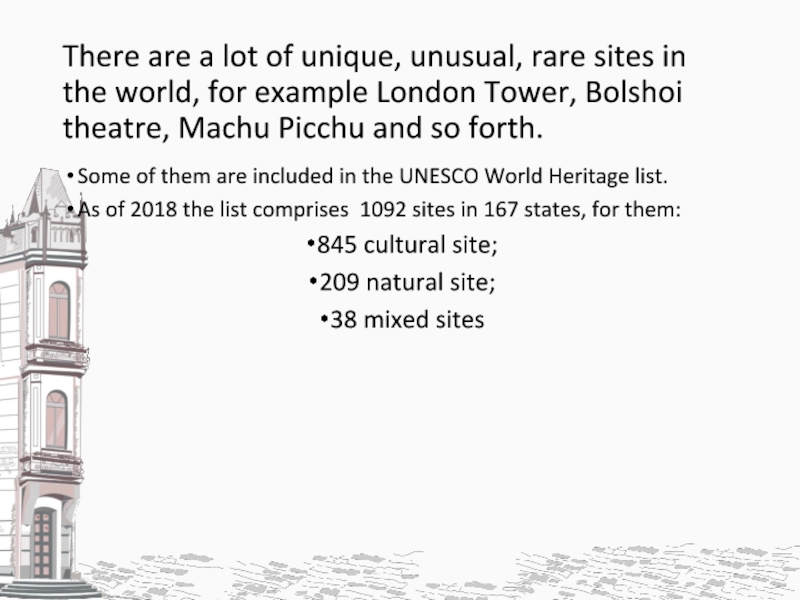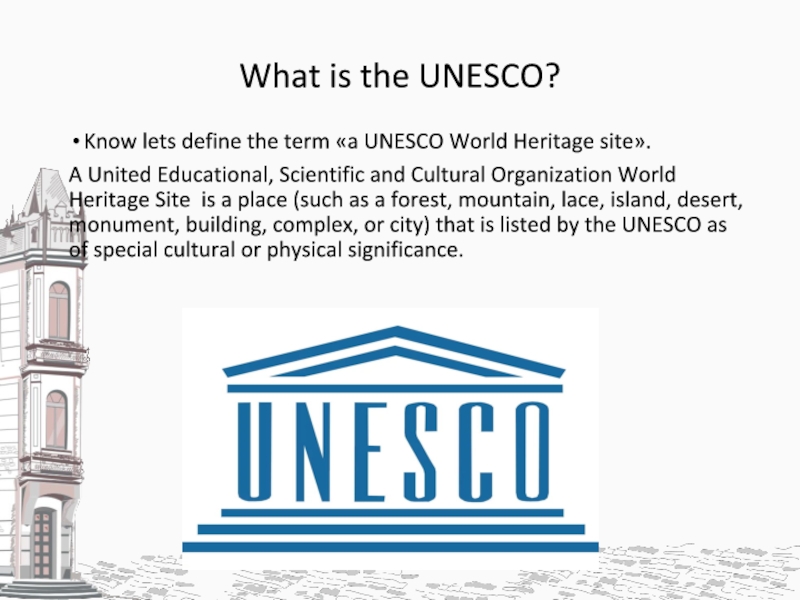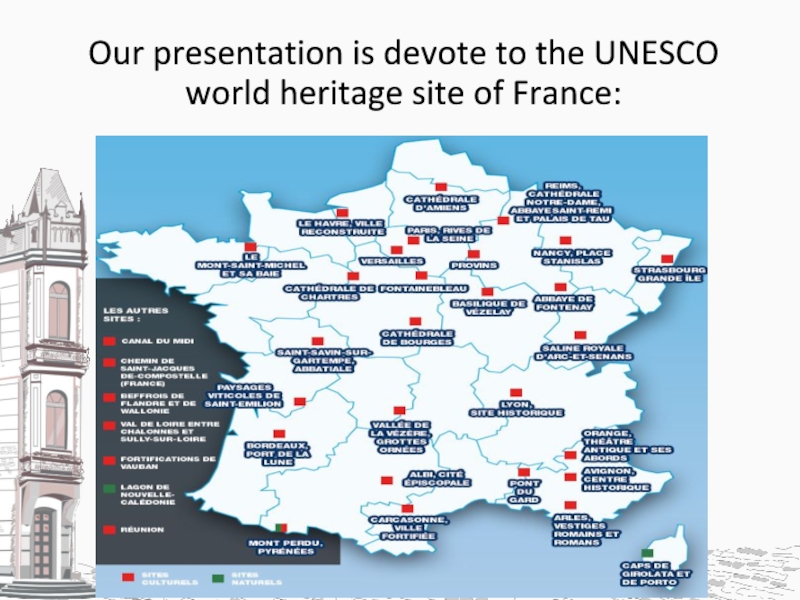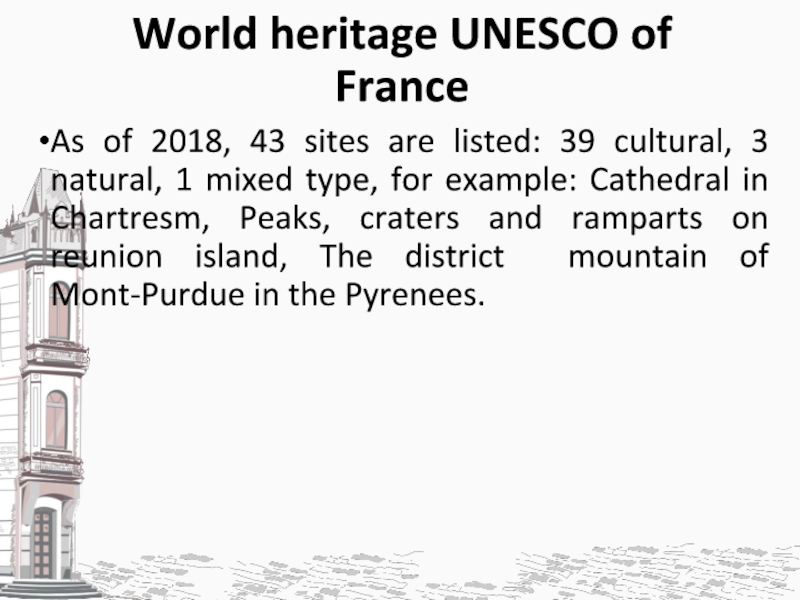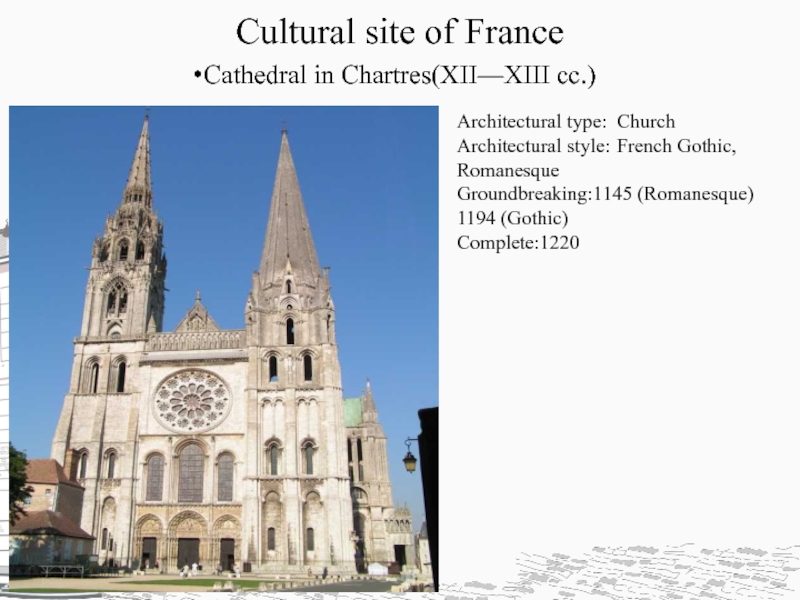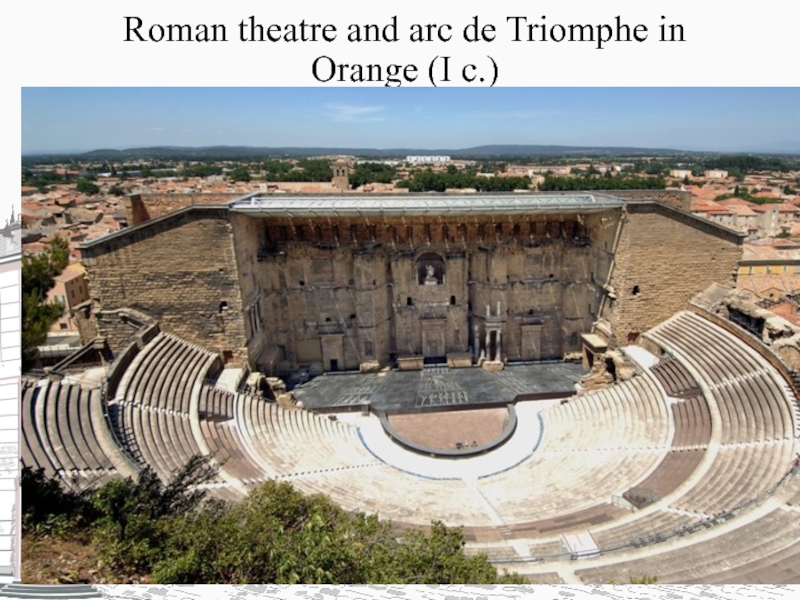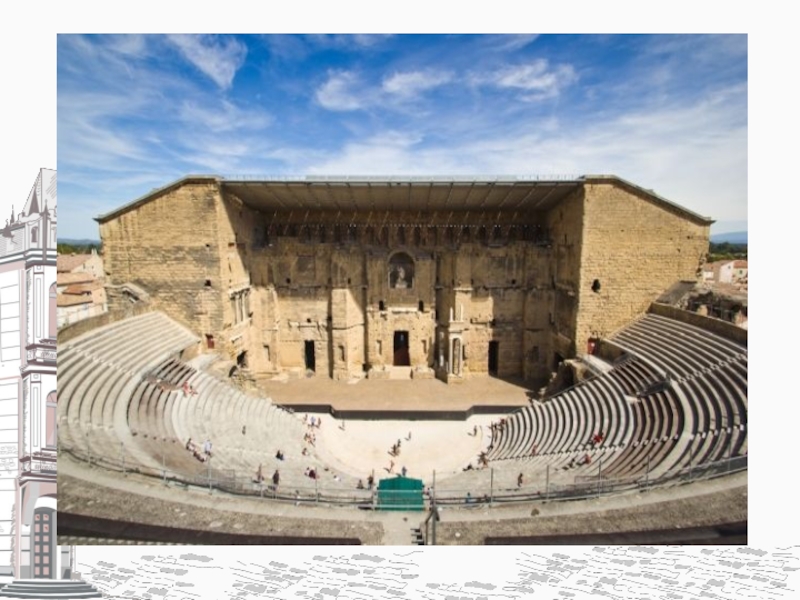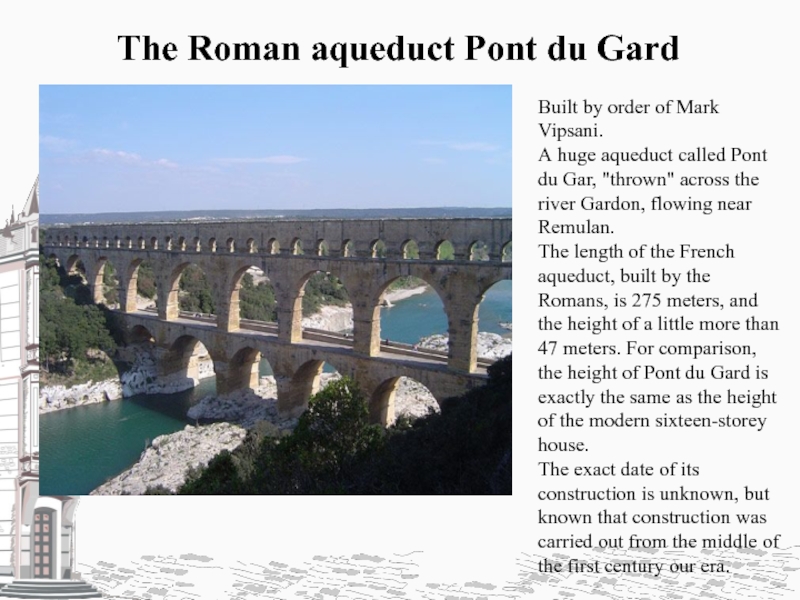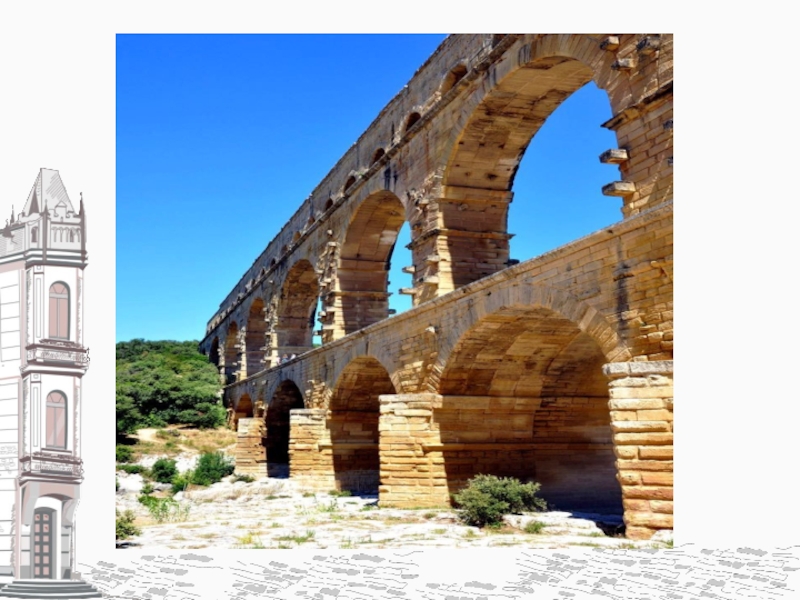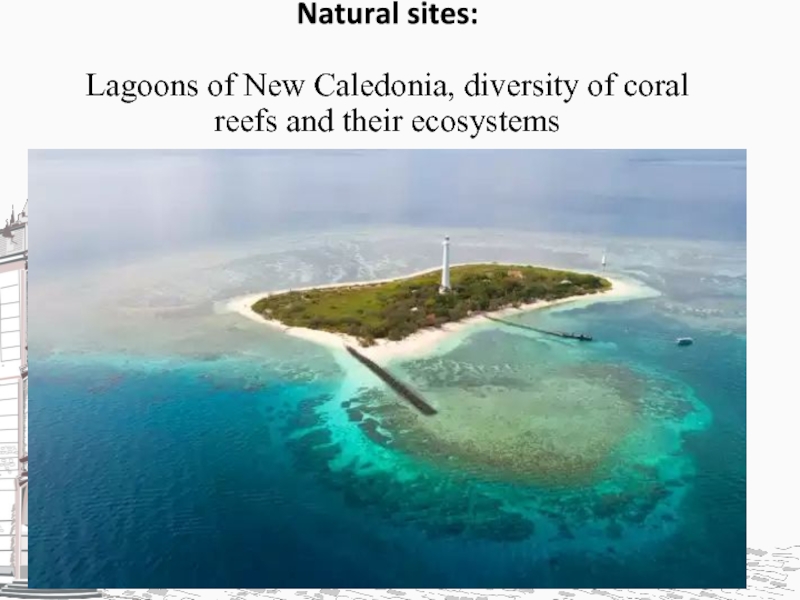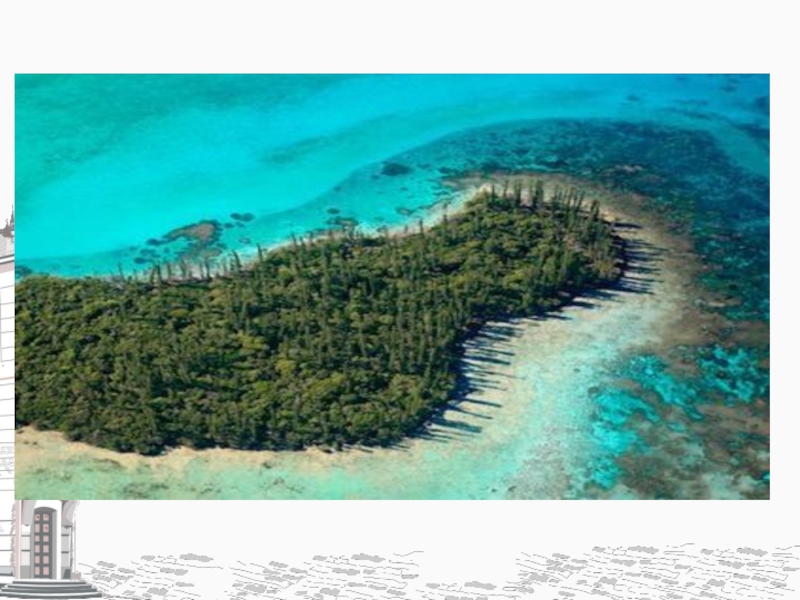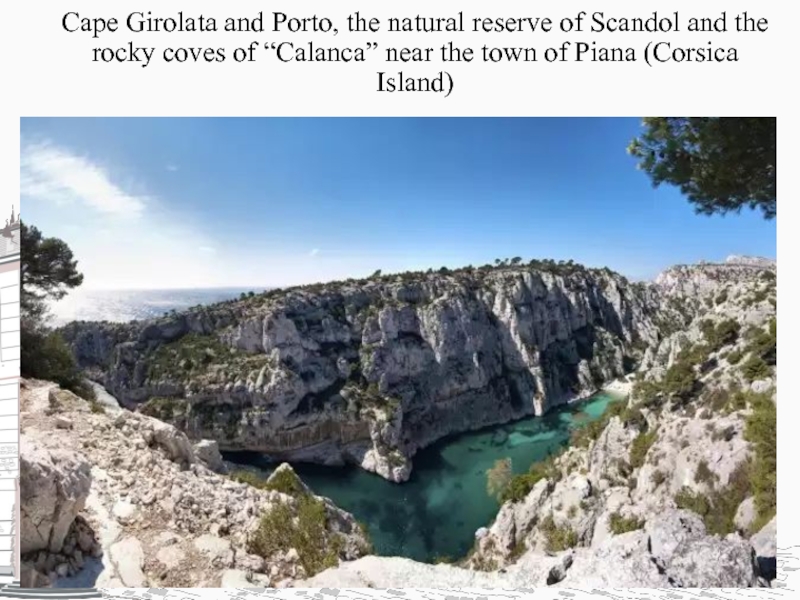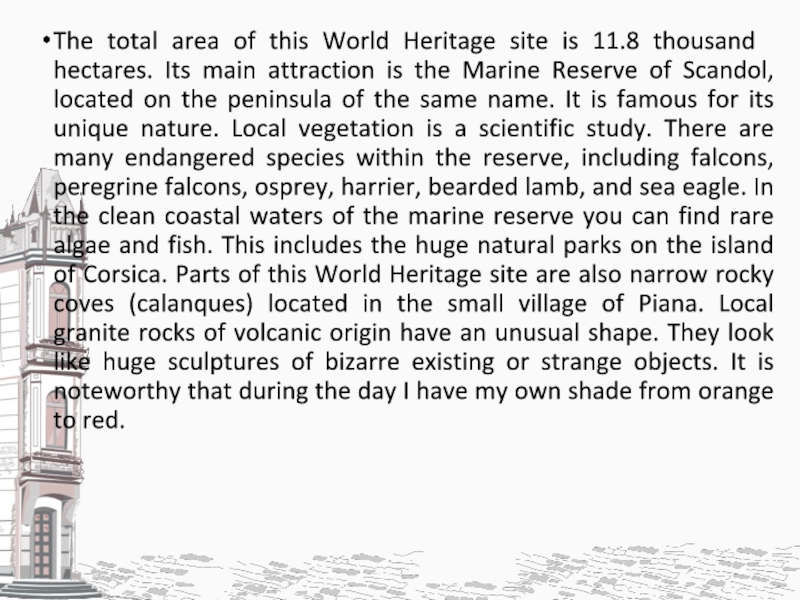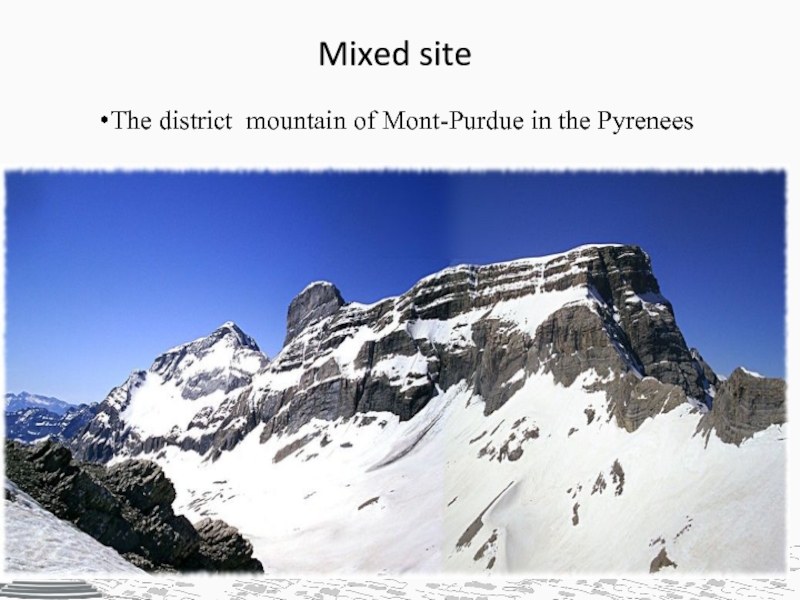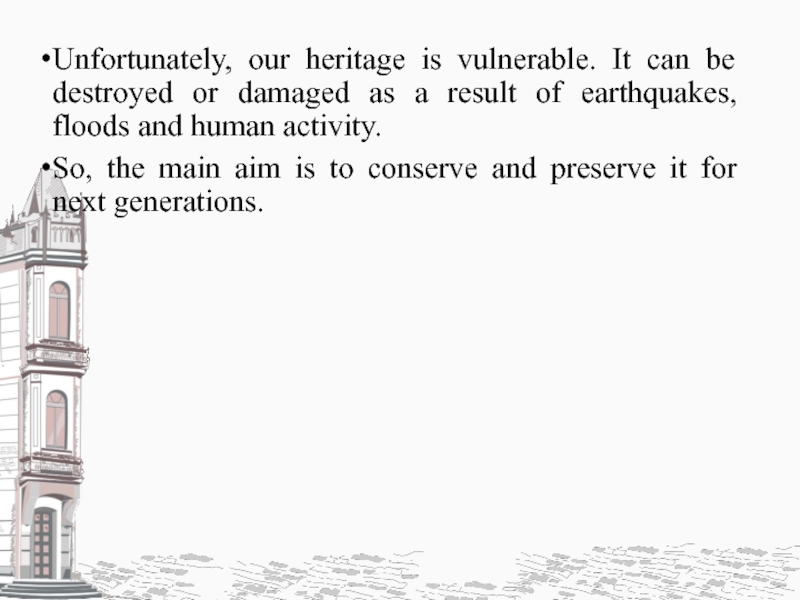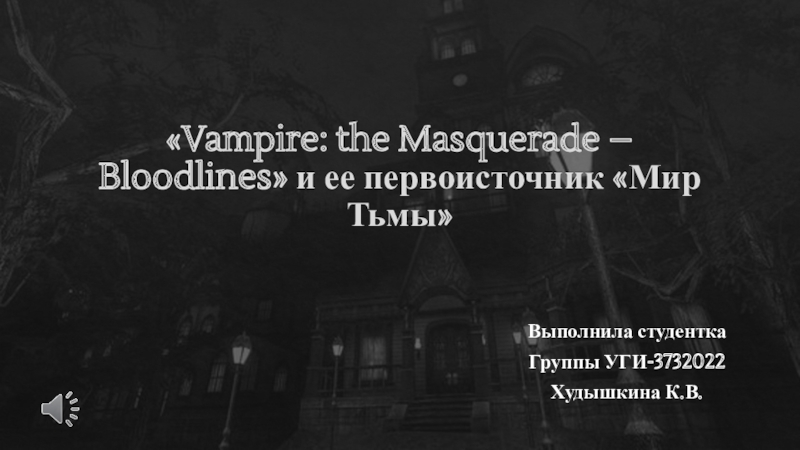Слайд 1THE UNESCO WORLD HERITAGE OF FRANCE
Слайд 2There are a lot of unique, unusual, rare sites in
the world, for example London Tower, Bolshoi theatre, Machu Picchu
and so forth.
Some of them are included in the UNESCO World Heritage list.
As of 2018 the list comprises 1092 sites in 167 states, for them:
845 cultural site;
209 natural site;
38 mixed sites
Слайд 3What is the UNESCO?
Know lets define the term «a UNESCO
World Heritage site».
A United Educational, Scientific and Cultural Organization World
Heritage Site is a place (such as a forest, mountain, lace, island, desert, monument, building, complex, or city) that is listed by the UNESCO as of special cultural or physical significance.
Слайд 4Our presentation is devote to the UNESCO world heritage site
of France:
Слайд 5World heritage UNESCO of France
As of 2018, 43 sites are
listed: 39 cultural, 3 natural, 1 mixed type, for example:
Cathedral in Chartresm, Peaks, craters and ramparts on reunion island, The district mountain of Mont-Purdue in the Pyrenees.
Слайд 6Cultural site of France
Cathedral in Chartres(XII—XIII cc.)
Architectural type: Church
Architectural style: French Gothic,
Romanesque
Groundbreaking:1145 (Romanesque)
1194 (Gothic)
Complete:1220
Слайд 8Roman theatre and arc de Triomphe in Orange (I c.)
Слайд 10The Roman aqueduct Pont du Gard
Built by order of Mark
Vipsani.
А huge aqueduct called Pont du Gar, "thrown" across the
river Gardon, flowing near Remulan.
The length of the French aqueduct, built by the Romans, is 275 meters, and the height of a little more than 47 meters. For comparison, the height of Pont du Gard is exactly the same as the height of the modern sixteen-storey house.
The exact date of its construction is unknown, but known that construction was carried out from the middle of the first century our era.
Слайд 12The destruction of this majestic crossing was not part of
their plans, so for this attitude to the ancient building
were provided various penalties. This played a decisive role in the fact that Pont-du-Gard has survived to our time almost intact. Another important fact: travel on the bridge in the Middle ages was paid: the price for the crossing was quite high: ordinary peasants could not afford to travel on the most interesting part of the aqueduct.
Слайд 13Natural sites:
Lagoons of New Caledonia, diversity of coral reefs and
their ecosystems
Слайд 15Cape Girolata and Porto, the natural reserve of Scandol and
the rocky coves of “Calanca” near the town of Piana
(Corsica Island)
Слайд 16The total area of this World Heritage site is 11.8
thousand hectares. Its main attraction is the Marine Reserve of
Scandol, located on the peninsula of the same name. It is famous for its unique nature. Local vegetation is a scientific study. There are many endangered species within the reserve, including falcons, peregrine falcons, osprey, harrier, bearded lamb, and sea eagle. In the clean coastal waters of the marine reserve you can find rare algae and fish. This includes the huge natural parks on the island of Corsica. Parts of this World Heritage site are also narrow rocky coves (calanques) located in the small village of Piana. Local granite rocks of volcanic origin have an unusual shape. They look like huge sculptures of bizarre existing or strange objects. It is noteworthy that during the day I have my own shade from orange to red.
Слайд 19Peaks, craters and ramparts on reunion island
Слайд 21Mixed site
The district mountain of Mont-Purdue in the Pyrenees
Слайд 22In the center of this wonderful high-mountainous massif covering the
border between France and Spain is the region in the
Pyrenees, the limestone mountain Mont Perdue rises, reaching 3352 m. on the Spanish side) and three large ice circus (in France). The local pastoral landscapes illustrate the agricultural pattern, which was previously very typical of the mountainous regions of Europe, but to date it has survived only in this part of the Pyrenees. Past times are reminiscent of villages, fields and farms, mountain pastures and roads.
Слайд 23So, as you can see cultural site prevail in the
France. They attract millions of tourists from all over the
world. Many of them have become popular tourist attractions.
The district mountain of Mont-Purdue in the Pyrenees
Слайд 24Unfortunately, our heritage is vulnerable. It can be destroyed or
damaged as a result of earthquakes, floods and human activity.
So, the main aim is to conserve and preserve it for next generations.

